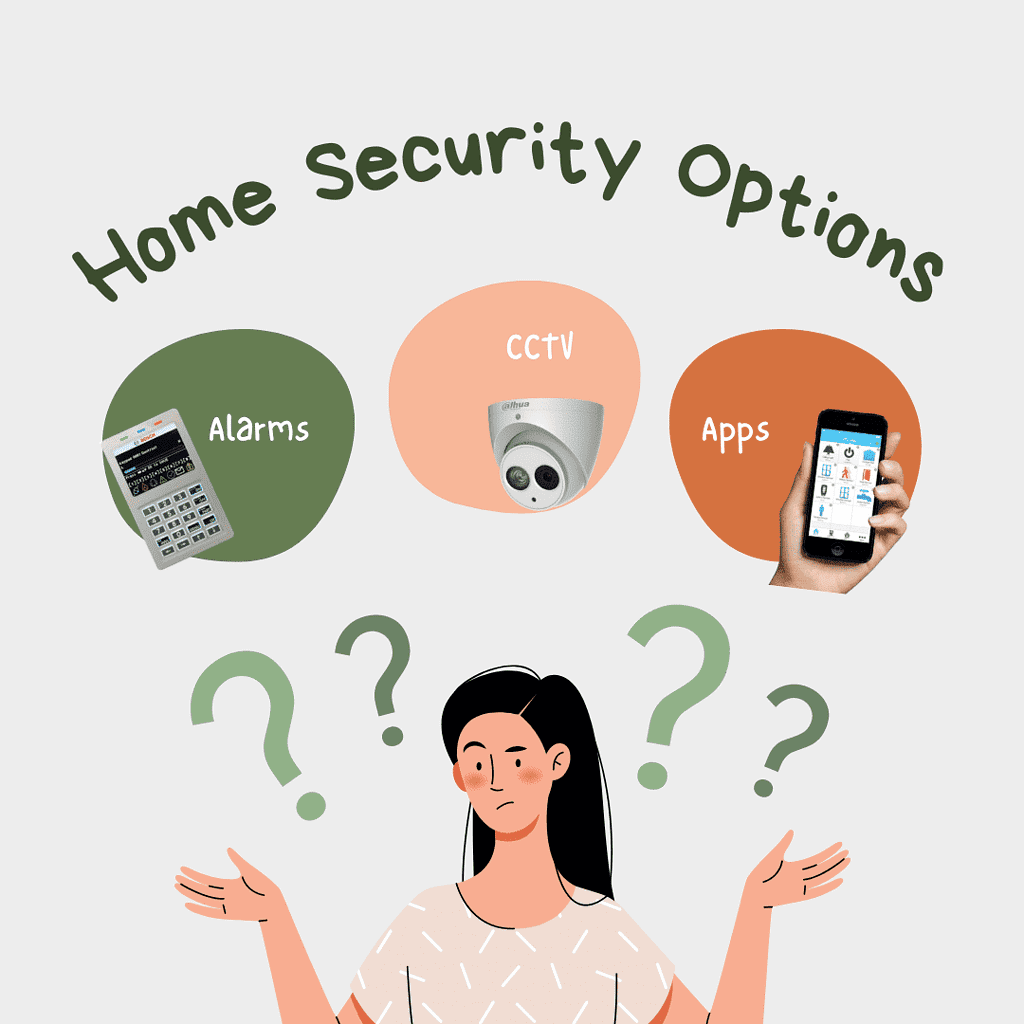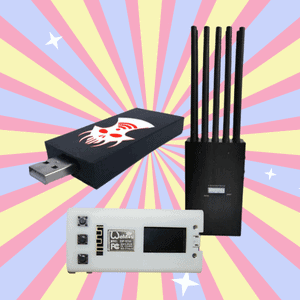Get The Protection You Need Without Paying For Features You'll Never Use

Looking for a home security system to protect your home and family?
It’s hard to know where to start – there are way too many options out there: alarm systems, cameras, smart home, mobile app integration, the list goes on and on.
I’ve been installing and servicing home security systems since 1981 so I want to help you cut through the marketing hype and conflicting information on the internet.
I’ll quickly outline the options and point you in the right direction so you can find the best home security system for you. Of course this is just my opinion, but its based on real world experience dealing with thousands and thousands of customers just like you.
What Are The 2 Types of Security System?
1 - Protection While You're Away - the house is empty
This type of system is the most common. It has motion sensors – usually 3 or 4, located in well-chosen locations inside the house. It also has an external siren and at least one internal siren.
The idea is that an intruder in your home is detected within 3 or 4 steps. The very loud internal siren (s) lets the intruder know he’s been detected.
He will assume some sort of response is on the way so he knows he’s got perhaps 60 seconds to grab something of value and nick off. The external siren draws attention to your home from neighbors. Even if no one in the immediate area walks over to investigate the cause, the intruder will most likely leave – he doesn’t want to hang around and risk getting caught IF someone responds to the alarm.
Nothing To Steal...
Its a bit of a misconception to think that burglars steal everything that’s not bolted down during a home break-in.
I’ve done hundreds of break-in reports and it might surprise you to know there’s really not that much an intruder is interested in in your house.
You might have the latest, huge smart TV, a nice lap-top and smart-phone, but these things don’t have any resale value for a burglar. Why? No one buys second hand electronics anymore – the new stuff is cheap and better than than the one you bought 3 months ago!
Remember the intruder wants stuff he can sell for money…TODAY
So why do house break-ins continue to happen?
Most homes have a bit of cash (a child’s money box for example) around and there’s almost always some jewellery.
More worrying is the trend for burglars to break into your home when you’re asleep, locate the keys to your expensive car and steal it.
But even if you don’t have alot of valuable stuff, it’s still a good idea to keep it safe and secure.
To make sure your home is as protected as possible, you might want to think about investing in a good security system. The technology has never been more reliable and affordable. You can opt for professional installation or do-it-yourself. It might seem like a hassle, but it’s definitely worth it for the peace of mind you’ll get.
2 - Protection While You're Home
This is the system you need to consider if you also want protection when the home is occupied. It builds upon the previous system – (the one that protects the unoccupied)home but we’re going to add some extra devices.
Most security companies would add door and window sensors and glass break detectors to give a basic system for alerting you to a break-in while you’re sleeping.
You’d arm the system in ‘STAY’mode before you go to bed. This disables the motion sensors inside the home but arms the door and window sensors
This is not a good idea and gives you a false sense of security.
Here’s why.
If an intruder opens a door or window while you’re asleep the internal and external sirens will immediately trigger.
The problem is the intruder is expecting that.
You however are woken from a deep sleep with one or more loud sirens inside your home.
Imagine it… I mean the sirens are LOUD. You would need a minute to fully wake up and realise what was going on.. Now kids and other members of the house are waking…frightened…heading out of their rooms to see what’s going on
It would be complete confusion.
What would you do?…
Rush to the codepad to disarm the system so you don’t disturb the neighbours – possible running into the burglar?
Lock yourself in the bedroom and call the police?
Assume it was a false alarm?
Meanwhile, the intruder, who is wide awake fully alert can quickly grab an item of value and be gone before you realise what happened.

A Proper Perimeter System
A more effective way to monitor and detects an intruder is to install one or more outdoor motion sensors. These reliable sensors can be placed across gates and driveways, down the side of the house, across verandahs and porches. They provide a useful ‘extra layer’ of protection to your home.
When triggered they sound an alert tone on a portable receiver that you place beside your bed. It plays a choice of tones and will wake you up in a far gentler manner than the loud ‘screamer’ sirens.
Remember, the intruder is still outside at this point and hasn’t even figured out how he’s going to get in.
Now you have the upper hand and have some time to respond.
Early detection usually means you can prevent a break-in from happening.
That could mean turning on all the outside lights, activating a very loud outside siren so he knows he’s been detected or calling a neighbor or the police.
Hardwired or Wireless
In my opinion home security systems should be hardwired wherever possible. Although wireless technology has improved a lot over the last years, wireless systems still have a number of shortcomings that yo don’t get with a hardwired system Here are some of them:
Wireless Alarm Considerations
Jamming
Wireless systems can be jammed by savvy intruders. Jamming stops the wireless detectors working so an intruder can break in and not be detected. – do a quick Google search and you’ll find hundreds of examples of this.
Battery Replacement
Each wireless sensor (motion detectors, door and window sensors) are powered by a battery. The battery life varies depending on how often the detector is triggered but you’ll get at least 2 years between battery replacements
Sleep Mode
Wireless sensors use a battery saving technique call sleep mode. Basically it means that when a motion sensor detects movement it ;goes to sleep’ for up to 3 minutes before it ‘wakes up’ again. This reduces your security. Fortunately some security system manufacturers are using a new battery saving method called 2 way wireless. This is far superior to sleep mode and ensures every step the intruder takes in your home is detected and reported.
See systems with 2 way wireless HERE
Cost: Wireless sensors usually cost a bit more than hardwired sensors

Wifi Jammers
On the Positive Side
Wireless security devices can be installed quickly compared to hardwired systems.
A fully wireless system can be installed in around 2 hours. A hardwired system can take 6-8 hours.
Flexible Mounting Location
You can mount a wireless device almost anywhere. With a hardwired system you’re restricted by cable access. For example, you might want your hardwired codepad on the left hand side of your front door. If you’ve got a two story home this might not be possible as it cannot be cabled
Rapid Installation
An increasing number of customers don’t want an installer scratching around in their roof for hours trying to get cables installed for a hardwired alarm system. He may have to disturb your your air-conditioning and heating ducts and lift roof tiles to get the cables in place. It can be a long, disruptive and messy job. A full wireless system can be installed in around 2 hours
Other Features of Wireless Alarm Systems
Wireless systems have features flexible enough to deal with almost any situation:
control your garage door and gates from the alarm systems app
easily add Door Open Too Long alarm to your garage door
quickly add outdoor sensors
it’s simple and quick to relocate an existing sensor or to add new sensors. You can even do it yourself and save some money.
Hardwired Alarm Systems
All of the above can be done with a hardwired system as well . The cost to do so is significantly more because ever component needs a cable. This can mean ugly conduit on the outside of your home or expensive trenching if the cable s need to be buried underground
For a standard, basic security system in a single story home, a hardwired system is perfect. In multi-story home I would definitely use a wireless system UNLESS it is a particularly high risk target.
Video Verification
The latest systems have motion sensors with cameras built into them. If your alarm is triggered you’ll get video verification of what actually caused the alarm to triggered. If it was a the kitchen curtain blowing in the breeze, you can disarm the system, bypass the bedroom sensor and re-arm the system. If the video clip shows a stranger in your home, you can contact the police and tell them you have visual confirmation of a crime taking place in your home. This is much more useful than receiving a text message from your alarm system.
Live indoor and outdoor cameras can also be added to the system and fully integrated.
Monitoring and Response
What happens when your alarm is triggered?
There are 3 options:
1 - 'Local' Alarm
The internal and external sirens immediately start blaring. The blue strobe light also starts flashing. This continues for 2 – 5 minutes, depending on how it was set up. then they stop (The blue strobe continues to flash until you disarm the system.
2 - Mobile Phone Alert
This option will send notification on your phone and is the most popular choice for home owners. Older systems will send you a text message. The latest systems will send you a push notification to your phone that shows which sensor was triggered with a time and date stamp. If your system has integrated security cameras (visual verification) you’ll also receive some snap shots or a hd video clip showing why the alarm was triggered. You can also arm and disarm the alarm from your phone, open the garage door and check the history log of alarms on the system.
The latest Smart home security system from Hikvision also allows you to:
change entry and exit delays
adjust siren run time
add and delete user codes
3 - Professional monitoring
This is a security solution where you pay a monthly fee to have a monitoring service ring you if your alarm has been triggered. They can also arrange a patrolman to attend and will report a genuine break-in the the police.
Which System Is Right For You?
In conclusion, home security is a top priority for homeowners, and there are several options available to protect your property using an alarm system and CCTV system. Installing these systems can deter burglars and provide you with peace of mind, knowing that your home is secure. Whether you choose a wired or wireless alarm system, indoor or outdoor CCTV cameras, or a combination of both, it’s essential to ensure that your security system is installed by a reputable and experienced professional. By investing in a quality security system, you can safeguard your property, belongings, and loved ones from potential intruders, and enjoy a greater sense of security and protection in your home.
If you need more help, take our Alarm Selector Quiz HERE
This fun quiz only takes 30 seconds and it will recommend the best system for your needs.
You can also ring our office and speak to a home security systems expert if you have any questions


